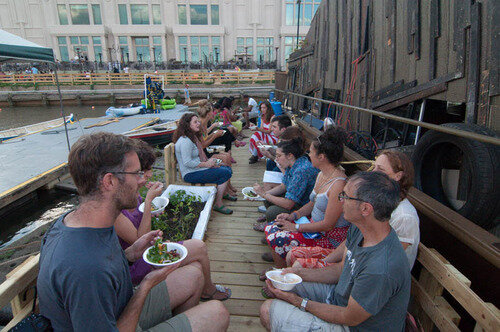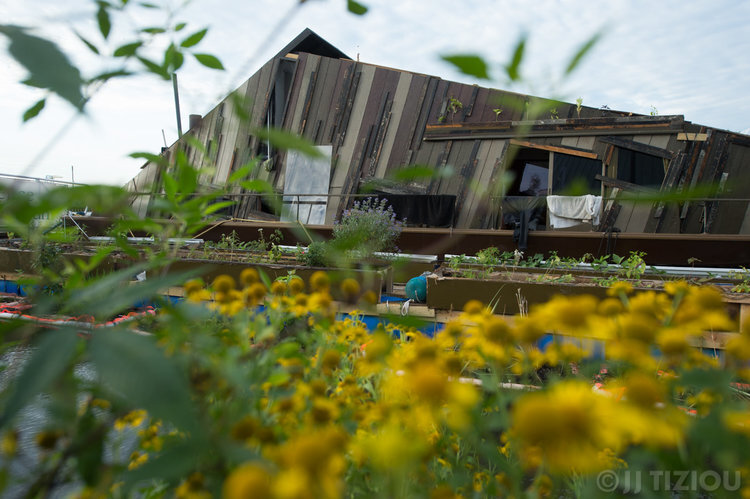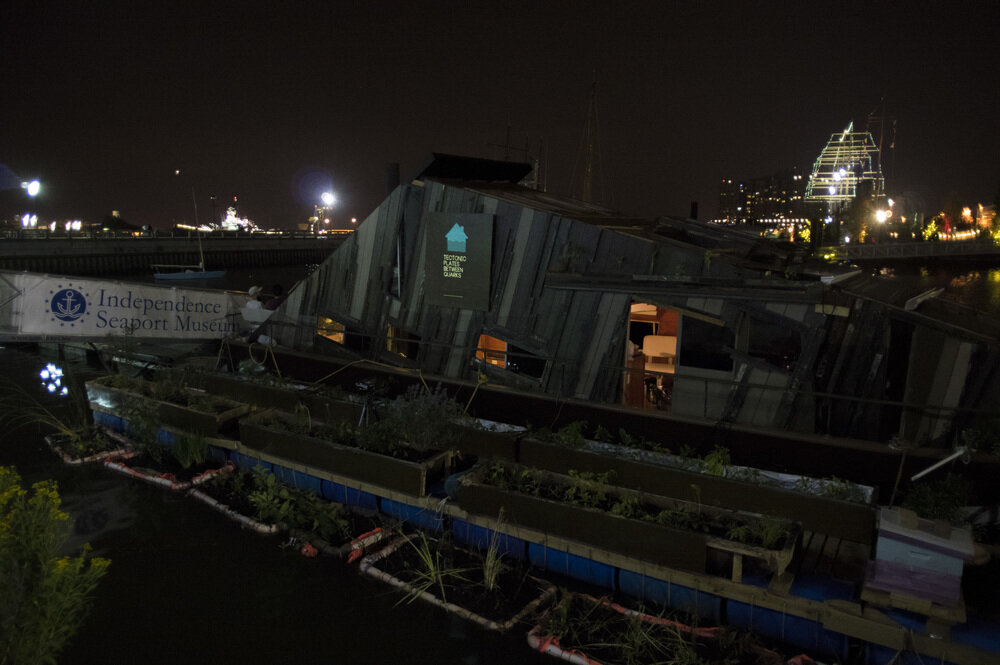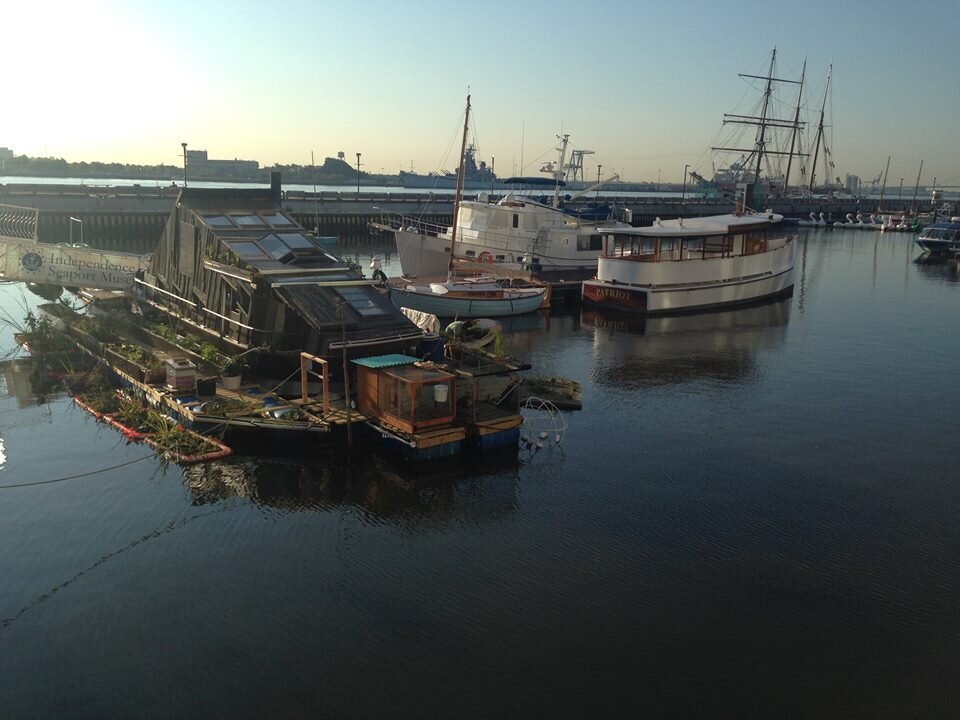Islands, Accidents 2015
DATA POINTS FROM A FLOODED WORLD
A pre-apocalyptic aquatic TEST SITE
Mary Mattingly’s Wet Land was a habitable sculpture and training test site for response to global sea level rise. To quote directly from the project description:
WetLand’s overall ecosystem includes rainwater collection and purification, greywater filtration, dry compost systems, outdoor vegetable gardens, indoor hydroponic gardens, and floating gardens circling the perimeter. Attention to the social and environmental impacts involved in material production, distribution, use, and disposal are important to the formation of WetLand, which was built entirely from the urban waste stream.
WetLand augments local community movements by drawing a broad range of people with different backgrounds to the space, and by organizing collaborations. WetLand stresses how important it is for more people to be involved in caring for our common home and to re-address water as a commons by engaging with students who steward the space, collect data relating to energy use and production, and test and maintain the project’s water systems. The WetLand sculpture is an argument for a thriving local urban environment.
THE MAP
A POST-APOCALYPTIC FLOODED WORLD
SCIENTISTS, BANKERS AND ANIMALS
DIAMONDS, ROPES AND NEUTRONS
ARMIES, MONSTERS AND LEAGUES
OF REAL AND FICTITIOUS NATIONS
A TELEPHONE POLE,
NYMPHS AND UTOPIAS
TRIREMES, WALLS, AND MEN
As one of the temporary stewards of the space, Delta_Ark built a graphic installation of text that listed the objects (both real and fantastical) that WetLand would encounter on its journey through the flooded world. The text discusses the breakdown in the social order caused by rising seas, and creates a sequence of images that brings these scenes to life. The text also references other fantastical sea voyages, and puts the journey through the flooded future in this context (a world returning to the unknown, to magic). The full text is available here.
READ THE FULL TEXT HERE.
drowned cities, resilience & New landscapes
Slowly, depictions of climate change and rising seas have become a stable of both science fiction and (climate) fiction. Paolo Bacigalupi’s “Drowned Cities” recounts a refugee’s journey through flooded New Orleans. Kim Stanley Robinson’s “NY 2140” depicts life in flooded Manhattan (and concomitant financial/real-estate chicanery). Cities are deliberately preparing climate resiliency initiatives: Resilient By Design. According to some commentators: “the looming climate crisis will be to this century what the two world wars were to the previous one.” We will see both mass mobilization and also mass catastrophe. It will hit the global north harder than the global south. It will open up a rupture in geologic time (or it already has), creating completely new forms of landscape. You can imagine a kind of ‘national geographic of the flooded world’; this is some of what this particular piece points towards.




